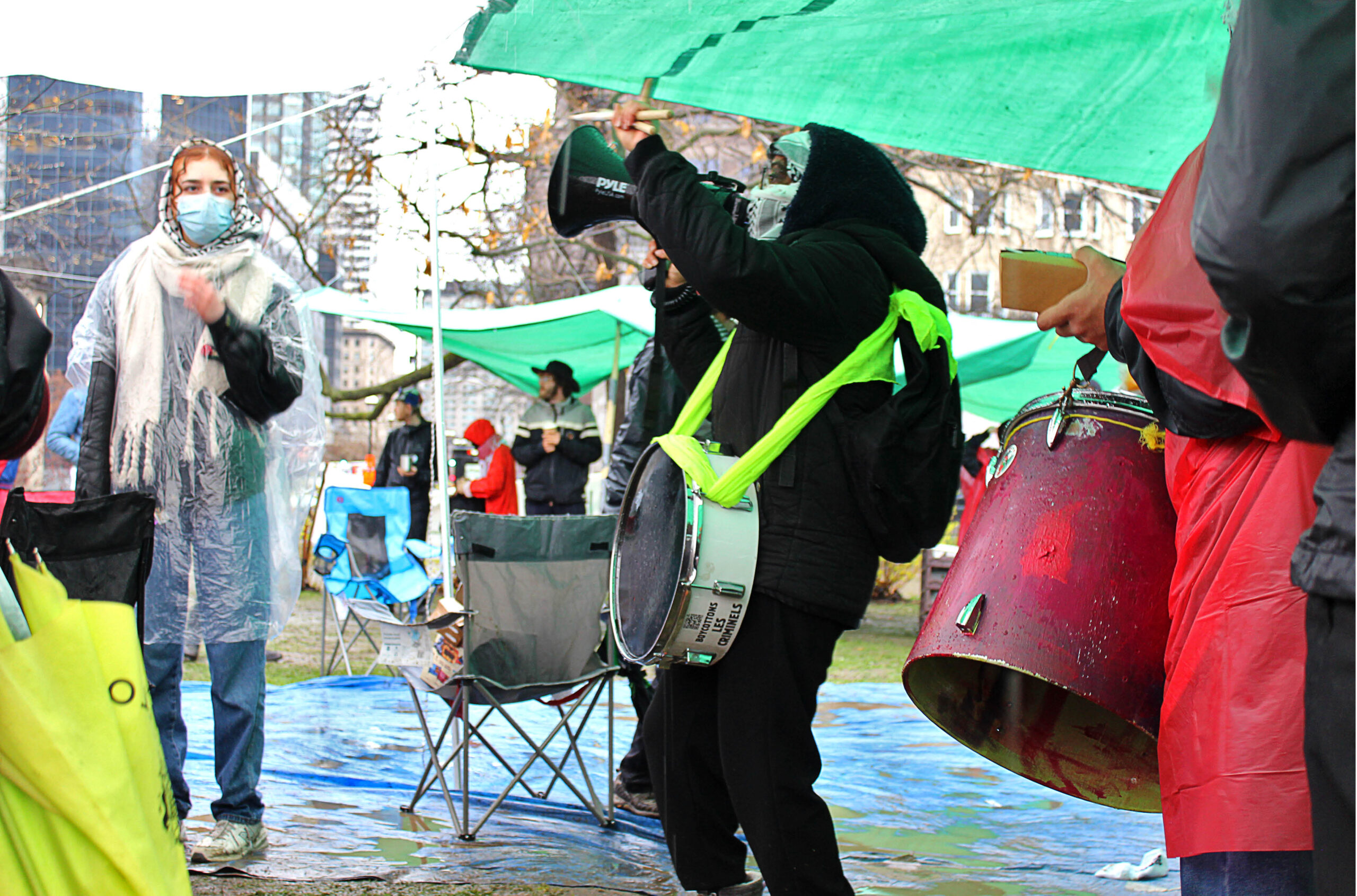‘Creating a campus of care’ to deal with the opioid crisis
While universities aren’t representative of the problem, one expert says they can play an important role by raising awareness.

In mid-September, Thompson Rivers University made headlines for reminding Canadians about the tragic toll that opioids continue to take. Flags across campus were lowered to half-mast in honour of 26-year-old Aaron Manson, a fourth-year student in business administration who died of an overdose in April.
“This is a small community,” said Christine Adam, TRU’s associate vice president of students and dean of the faculty of student development. “Nearly everyone here, including me, knows someone who has been a victim of the poisoned street drug supply.”
Ms. Adam said the opioid crisis has been very much on the radar of officials at her school since 2016, when the rising number of overdoses was declared a public health emergency in British Columbia. “We do everything we can to support the wellness of our students,” she said.
Even as Canada weathers yet another wave of COVID-19 infections , health-care professionals, harm reduction specialists and researchers continue to sound the alarm about the deadly fallout from street drugs tainted with the synthetic opioid fentanyl, which is 100 times stronger than morphine. And as the number of victims continues to climb and the problem migrates eastward from B.C., universities across the country are working to both educate and protect students, faculty and staff from the danger.
“The situation is very complicated,” said Wasem Alsabbagh, an assistant professor in the school of pharmacy at the University of Waterloo and the lead author of a new national study that found a six-fold increase in opioid-related deaths between 2000 and 2017.
Dr. Alsabbagh said the opioid problem began in the 1990s, when highly addictive opioid pain relievers were being widely prescribed. Crackdowns on prescription drugs drove a thriving black market for heroin, opioid, and illegally manufactured fentanyl and carfentanil led to a sudden surge of overdoses in 2015.
Deaths occur when people’s breathing slows to the point where it stops. Almost all of those deaths are considered both accidental and preventable if timely doses of naloxone, an opioid inhibitor, are administrated.
“By 2019, everyone understood the problem and more interventions started, so there was some control,” said Dr. Alsabbagh. “But COVID disrupted medical care, closed addiction treatment centres, brought mental health pressures and closed borders, which created a ready market for bad quality fentanyl made in illegal basement labs, mostly in Vancouver and Halifax.”
Creating ‘a campus of care’
The problem is of particular concern at TRU, which, as the only postsecondary school in the community of Kamloops, offers both university-degree programs and vocational training. The 2018 B.C. coroner’s report on the opioid crisis found that 80 per cent of overdose deaths involved young men, half of whom were employed in the trades and transportation industries, Ms. Adam said. Nearly 10 per cent of the university’s 25,000 students are also First Nations, a group that is overrepresented among overdose victims in B.C., accounting for nearly 30 per cent of deaths.
Since 2017, hundreds of naloxone kits have been distributed to faculty and students across TRU’s campus each year. There is a one-day staff training seminar on the opioid crisis and naloxone use, and a wellness centre where more than 1,000 senior students, faculty and staff have received training on holding their own opioid awareness presentations in class.
The school has also taken harm-reduction strategies such as the Lifeguard app, a B.C.-made device that is activated by people who use drugs alone and will make a 9-1-1 call if the user doesn’t hit a button to stop the alarm after 75 seconds.
“We’re trying to create a campus of care that doesn’t isolate or pigeonhole people who use drugs,” said Ms. Adam. “When half of the victims are employed young men, it makes it incumbent on us – a duty – to provide that kind of harm reduction education and support.”
Will Garrett-Petts, TRU’s associate vice president of research and graduate studies, is also hoping to learn more about how the crisis is affecting trades workers by engaging with TRU students who are studying to enter those fields.
“We know, for example, that the majority of those affected work in the construction trades: predominantly young men, ages 19-40. This is a group notoriously reluctant to reach out and self-disclose,” Dr. Garrett-Petts said in an email. “Working with TRU’s trades students, we hope to learn more about how to engage those most impacted by the stigma of addiction.”
‘Safer and smarter’
The University of Calgary has similarly embraced the harm-reduction approach, said Rebecca Haines-Saah, an assistant professor and sociologist in the department of community health sciences who specializes in adolescent mental health and substance use. “The idea is to keep them safe by giving them the right information and tools to make them safer and smarter.”
Dr. Haines-Saah has been raising awareness about the pitfalls of substance abuse since she was a teenager. Back then, she was a TV star in the Degrassi Junior High series and her character notably experimented with drugs. Today, she says that involving and engaging students through initiatives like the Liam Project, a U of C student-led overdose prevention project, are the most effective harm-reduction strategies for everything from substance and alcohol use to sex education.
“More than 400 people in Calgary died needlessly in 2020 from opioid overdoses, a death rate that at times outpaced deaths from COVID,” Dr. Haines-Saah said. “If we can’t ensure a safe drug supply, the least we can do is to educate people on the dangers.”
Most if not all Canadian universities have taken measures to deal with overdoses in recent years, including by stocking naloxone kits on campus and training staff, faculty and students on their use.
Still, it’s hard to get a sense of the extent to which poisoning deaths from toxic street drugs are occurring on Canadian university campuses. Harm reduction expert Mark Tyndall doesn’t have or know of any data on the subject. But after decades of doing community-based research on HIV, poverty and illicit drug use – much of it on the needle-strewn backstreets of Vancouver’s Downtown Eastside – his gut feeling is the numbers are quite low.
“Alcohol and cannabis are still the substances of choice on university campuses – and maybe amphetamines for students trying to pull all-nighters – not the fentanyl-tainted illicit drugs that are at the heart of the opioids crisis,” said Dr. Tyndall, a physician and professor at the school of population and public health at the University of British Columbia who is considered a pioneer in the field of public health. “The people dying are mostly street entrenched, First Nations and young men in the trades. When a student dies, it gets press coverage.”
Though universities are not representative of the opioid crisis, Dr. Tyndall believes they have an important role to play in an ongoing epidemic that has claimed more than 21,000 lives in Canada since 2016.
“Awareness is still a huge problem,” he said. “These drugs are stigmatized so people are doing them in secret for fear of arrest or shame. Universities can help bring it out of the shadows by making students aware it is happening and recognizing that people are using these drugs for self-medication and coping.”
Featured Jobs
- Psychology - Assistant Professor (Speech-Language Pathology)University of Victoria
- Canada Excellence Research Chair in Computational Social Science, AI, and Democracy (Associate or Full Professor)McGill University
- Business – Lecturer or Assistant Professor, 2-year term (Strategic Management) McMaster University
- Veterinary Medicine - Faculty Position (Large Animal Internal Medicine) University of Saskatchewan















Post a comment
University Affairs moderates all comments according to the following guidelines. If approved, comments generally appear within one business day. We may republish particularly insightful remarks in our print edition or elsewhere.
1 Comments
Thanks for this important article. There is a growing number of Campus Recovery Communities emerging across Canada – working towards raising awareness and reducing addiction and recovery stigma on campus. Possible follow- up article ?
.